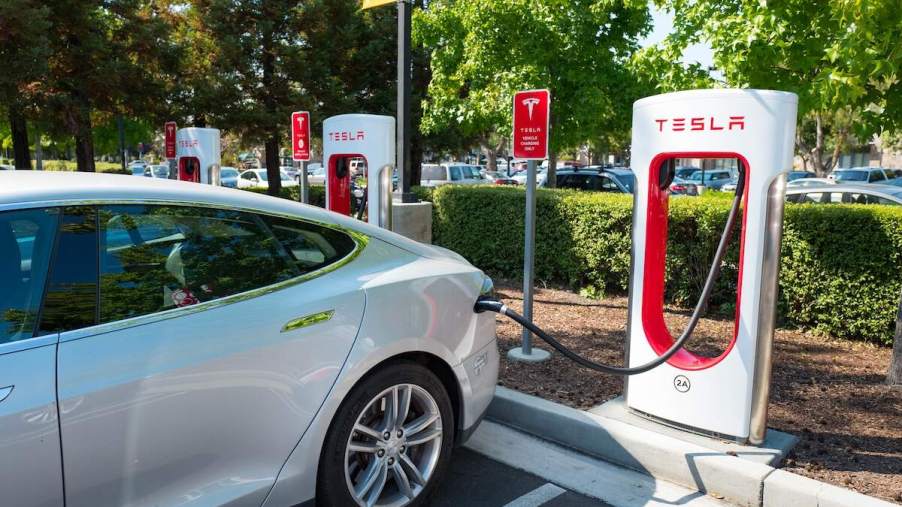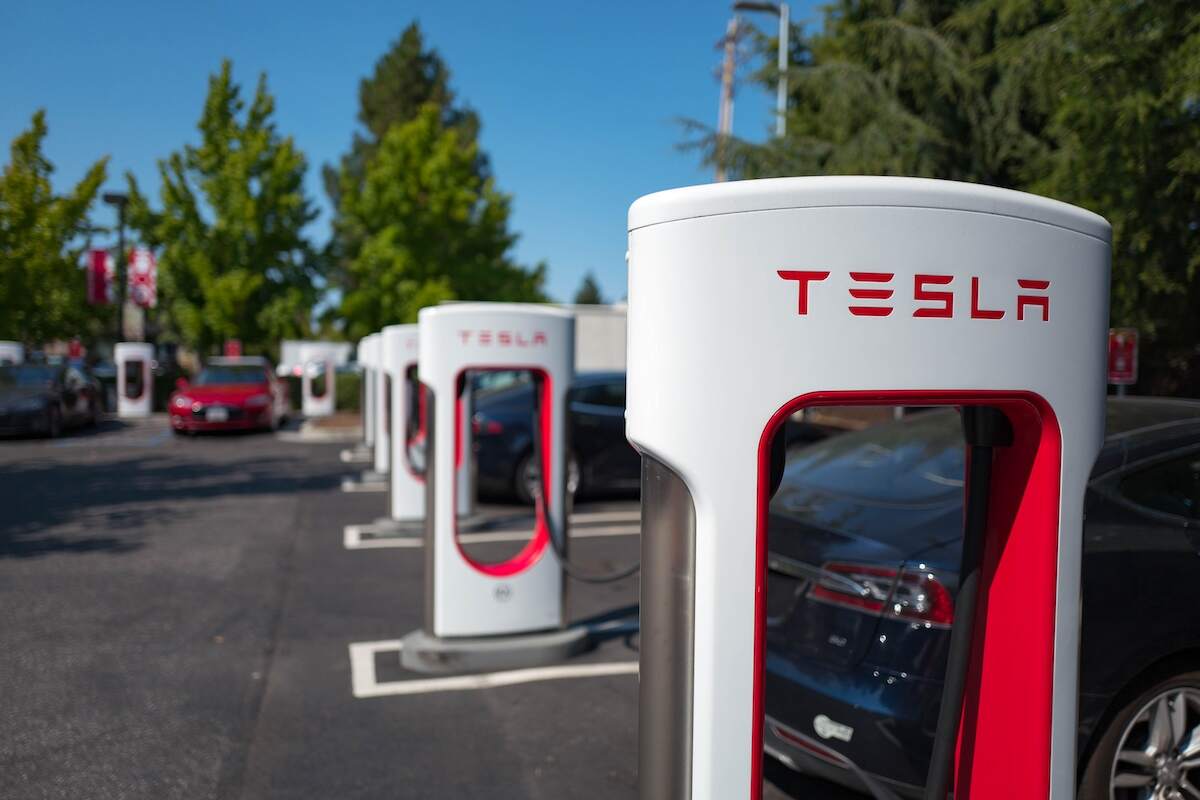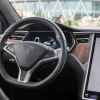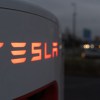
7 Non-Tesla EVs You Can Charge at Tesla Superchargers Soon
With plans to go all-electric by 2035, major automakers are transitioning to EVs as fast as possible. Consumers are also embracing EVs as the world looks toward alternative solutions to fossil fuels. However, the electric charging infrastructure is struggling with the increased demand. So Tesla, which has the most extensive charging network, recently announced it will allow non-Tesla EVs to use Tesla Superchargers.
This crucial move should make it easier for all EV drivers to find available fast-charging stations. It will likely also boost overall EV sales. So, what’s in it for Tesla? And which non-Tesla EVs can use Superchargers?
Why is Tesla opening its Supercharger network to non-Tesla EVs?

The U.S. must improve its EV infrastructure by increasing the number of charging stations available to drivers. Until now, the Tesla Supercharger network was off-limits to other brands’ electric vehicles.
Tesla plans to add 7,500 chargers for non-Tesla vehicles by the end of 2024. Allowing other brands’ EVs to use the network will let Tesla tap into the $7.5 billion the federal government set aside under the 2021 Bipartisan Infrastructure Law.
Granting non-Tesla vehicles access to the Supercharger network will also provide considerable income from charging fees to the EV pioneer. Tesla’s website says it has “always been our ambition to open the Supercharger network to non-Tesla EVs and, by doing so, encourage more drivers to go electric.”
EVs from these 7 car brands will be able to use Superchargers
Starting in 2024, EVs from the following automakers will be able to use the Tesla Supercharger network:
- Ford
- General Motors
- Mercedes-Benz
- Nissan
- Polestar
- Rivian
- Volvo
According to The New York Times, seven car companies will make an initial investment of at least $1 billion in a joint venture to build an additional 30,000 charging stations on major highways and locations in the United States and Canada. The automakers involved in the massive expansion project include the BMW Group, General Motors, Honda, Hyundai, Kia, Mercedes-Benz Group, and Stellantis.
How do you charge a non-Tesla EV at a Tesla Supercharger?
To charge a non-Tesla EV at a Supercharger, you need to create a Tesla account by downloading the Tesla app (version 4.18.0 or higher) for Android or iOS. Then select “Charge Your Non-Tesla,” and a list of nearby Superchargers will pop up. Next, provide a payment method. Then select a charging stall, unlock the adapter, plug in your EV, and select “Start Charging.” Finally, when the charging session ends, click “Stop Charging.”
Although the EV charging infrastructure expansion is excellent news for electric car drivers, don’t expect this change to happen overnight. Non-Tesla vehicles will have to find charging stations equipped with the “Magic Dock” feature, found primarily in New York right now. The essential requirement allows non-Tesla EVS to use Combined Charging System (CCS) plugs.
Another issue is that some EVs are not compatible with the Tesla stalls, with consumers complaining of cords that are too short and slower charging times. While the kinks get worked out of the rapidly expanding infrastructure, drivers can expect many improvements to the charging networks in the years ahead.


